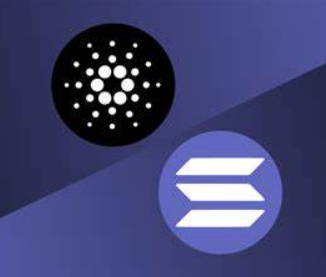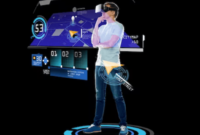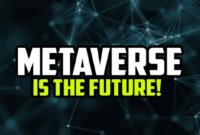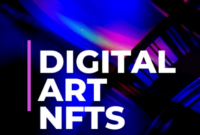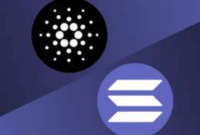
bbc.towzdog.com Cardano vs Solana Comparison: Which Blockchain Reigns Supreme? In the rapidly evolving world of blockchain technology, two platforms have emerged as leading contenders in the cryptocurrency space: Cardano and Solana. Both offer unique features, capabilities, and visions for the future of decentralized applications (dApps) and smart contracts. This article provides an in-depth comparison of Cardano and Solana, highlighting their differences, strengths, and weaknesses.
Introduction to Cardano and Solana
Cardano and Solana are both blockchain platforms designed to support dApps and smart contracts. However, they take different approaches to scalability, security, and decentralization. Understanding these differences can help investors, developers, and users make informed decisions about which platform to use.
What is Cardano?
Cardano, founded in 2017 by Charles Hoskinson, aims to create a more secure and scalable blockchain platform through a scientific approach. It uses a unique proof-of-stake (PoS) consensus mechanism called Ouroboros, which enables users to earn rewards for validating transactions while minimizing energy consumption. Cardano is known for its strong focus on academic research and peer-reviewed development.
What is Solana?
Launched in 2020, Solana is designed for high throughput and low transaction costs, utilizing a proof-of-history (PoH) mechanism combined with PoS. This innovative approach allows Solana to process thousands of transactions per second, making it one of the fastest blockchains available. Its performance has attracted a significant number of developers and projects looking for scalability.
Key Differences Between Cardano and Solana
1. Consensus Mechanisms
Cardano’s Proof-of-Stake (PoS)
Cardano’s Ouroboros PoS mechanism allows users to participate in the network by staking their ADA tokens. This system is designed to be energy-efficient while maintaining security and decentralization. Cardano’s development is phased, with updates aimed at increasing functionality over time.
Solana’s Proof-of-History (PoH)
In contrast, Solana uses a PoH mechanism that timestamps transactions before they are added to the blockchain. This allows for greater efficiency and faster processing times. Solana’s design enables it to handle up to 65,000 transactions per second, making it ideal for high-demand applications.
2. Scalability
Cardano
Cardano is working towards achieving high scalability through a series of planned upgrades, including the recent launch of its smart contract capabilities. While its current transaction speed is lower than Solana’s, Cardano aims to improve this as more features are integrated.
Solana
Solana’s architecture is built for scalability from the ground up. Its unique combination of PoH and PoS allows it to process thousands of transactions in parallel, significantly reducing bottlenecks during peak usage times.
3. Development Approach
Cardano
Cardano adopts a research-driven approach, emphasizing academic rigor and peer-reviewed methodologies. This means that updates and new features are carefully vetted, which can lead to slower development but aims for higher reliability and security.
Solana
Solana, on the other hand, embraces a more agile development model, focusing on rapid deployment and real-world testing. This has led to quick adoption by developers, resulting in a burgeoning ecosystem of dApps and projects.
4. Ecosystem and Use Cases
Cardano
Cardano’s ecosystem is growing, with a focus on areas like education, finance, and supply chain management. Projects like Atala PRISM aim to provide identity solutions, while partnerships with governments indicate Cardano’s ambition to be used in real-world applications.
Solana
Solana is particularly popular in the decentralized finance (DeFi) and non-fungible token (NFT) spaces. Its high throughput makes it an attractive option for applications that require fast transaction speeds, such as gaming and DeFi platforms.
5. Community and Governance
Cardano
Cardano features a strong community-driven governance model. ADA holders can participate in the decision-making process regarding network upgrades and protocol changes, fostering a sense of ownership and responsibility among users.
Solana
While Solana has a vibrant community, its governance structure is less decentralized compared to Cardano. The Solana Foundation plays a significant role in guiding the development of the platform, which some users view as a centralized point of control.
Current Data and Statistics
As of 2024, here are some key statistics for both platforms:
- Cardano (ADA):
- Market Cap: Approximately $10 billion
- Transaction Speed: 250 transactions per second (TPS)
- Active Projects: Over 1,000 dApps in development
- Solana (SOL):
- Market Cap: Approximately $15 billion
- Transaction Speed: 65,000 TPS
- Active Projects: Over 1,500 dApps, including leading DeFi platforms and NFT marketplaces
Conclusion: Which Platform is Right for You?
Choosing between Cardano and Solana ultimately depends on your specific needs and goals. If you prioritize scalability and fast transaction speeds for applications like DeFi or NFTs, Solana may be the better choice. However, if you value security, a methodical development approach, and community governance, Cardano might be more appealing.
Both platforms have their unique strengths and challenges, making them suitable for different types of users and projects. As the blockchain landscape continues to evolve, keeping an eye on the developments in both ecosystems will be essential.
For further insights into blockchain technology, consider visiting CoinDesk for the latest news and updates.
Final Thoughts
The Cardano vs Solana comparison highlights the diverse approaches to blockchain development. Understanding these differences can empower you to make informed decisions whether you are an investor, developer, or user in the cryptocurrency space. As both platforms continue to grow and adapt, they will likely shape the future of decentralized technologies.

